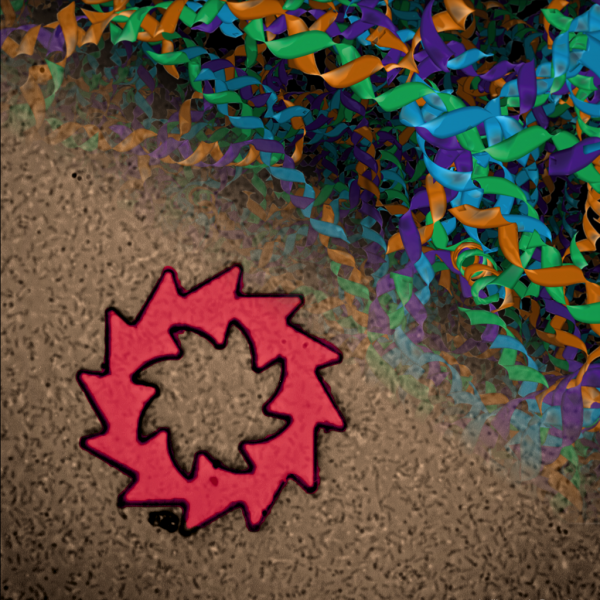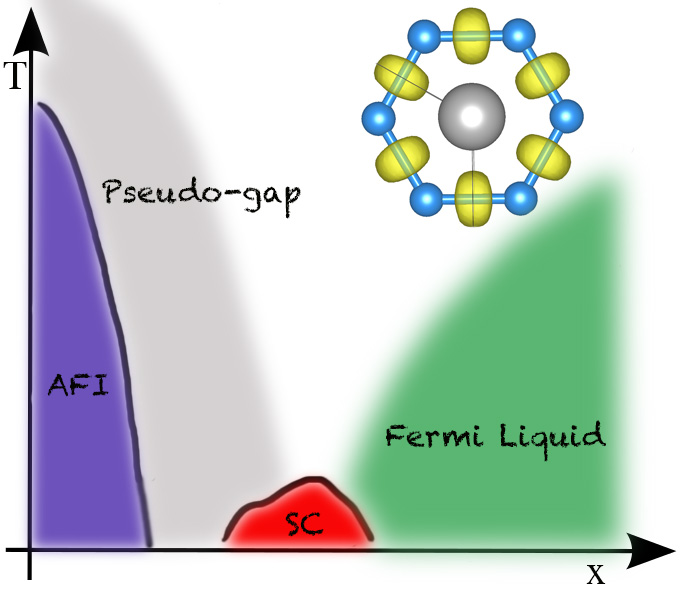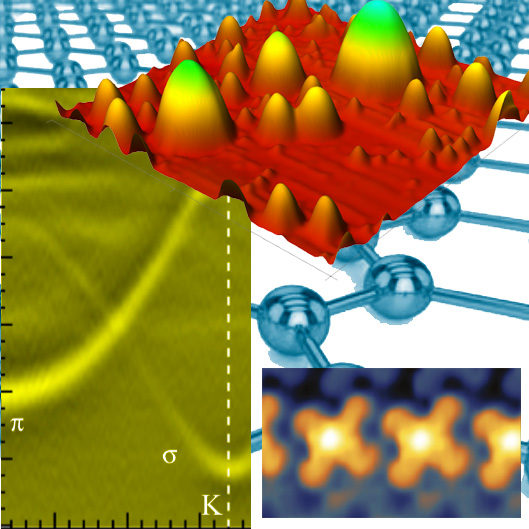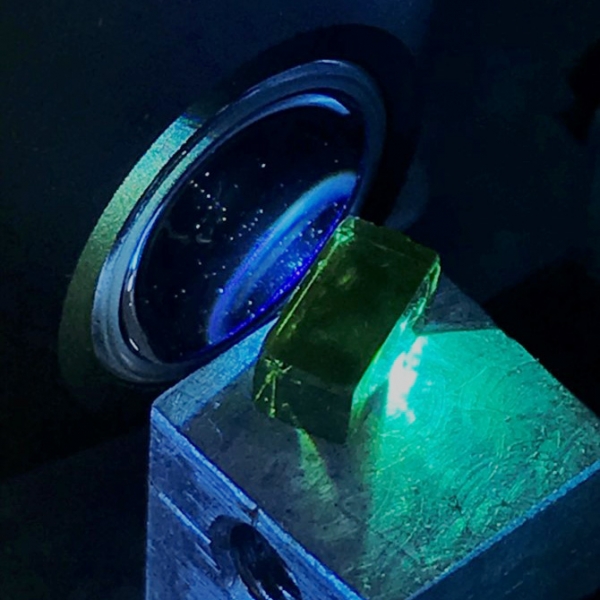Condensed Matter and Physics of Biosystems
The aim of the research activity in condensed matter physics is the understanding of the properties of condensed matter in its different aggregation forms, from the crystalline to the liquid and amorphous condensation, and of its interactions leading to a variety of phenomena, from superconductivity to phase transitions to magnetism and exotic phenomena.
The groups are involved in the building-up and in the optical, transport and electronic structure investigation of nanostructures at the atomic scale, with the emerging of new properties and exploration of new phenomena associated to the low dimensions, designed to achieve advanced functionalities; in the study and modelling of biological and active systems with unique and controllable dynamical behaviour; in the investigation of new phenomena in optics and the development of new tools for quantum information science and technology. The research activities span from fundamental physical problems to technological fields, investigated with a variety of experimental and theoretical approaches, using state-of-the-art experimental and computational techniques, also by means of large research infrastructures, such as synchrotron radiation, free-electron laser and neutron facilities and HPC computing.
- Active matter, soft matter and biosystems
 Advances in non-equilibrium physics, imaging, optics and computer science are creating new pathways and opportunities for the study of soft and biological matter. Research activities in this direction range from the spectroscopic investigation of fundamental processes in single biomolecules to the modelling and design of biological and active systems with unique and controllable dynamical behaviour.
Advances in non-equilibrium physics, imaging, optics and computer science are creating new pathways and opportunities for the study of soft and biological matter. Research activities in this direction range from the spectroscopic investigation of fundamental processes in single biomolecules to the modelling and design of biological and active systems with unique and controllable dynamical behaviour.
Members: Bordi, De Michele, Di Leonardo, Nucara, Ortolani, Placidi, Ruocco, Rovigatti, Sciortino, Scopigno
- Superconductivity, Highly correlated systems and Functional Materials
 The scientific activity is focused on the exploration of new phenomena in exotic electronic materials. This is a very active and growing research area within the Department of Physics, with several groups focusing on: high-Tc conventional and unconventional superconductivity, insulator-to-metal transitions, strong electronic correlation, low-dimensional superconductors, effects of disorder in low-dimensional electron systems, quantum phase transitions, topological phases of matter, spintronics…
The scientific activity is focused on the exploration of new phenomena in exotic electronic materials. This is a very active and growing research area within the Department of Physics, with several groups focusing on: high-Tc conventional and unconventional superconductivity, insulator-to-metal transitions, strong electronic correlation, low-dimensional superconductors, effects of disorder in low-dimensional electron systems, quantum phase transitions, topological phases of matter, spintronics…
Members: Baldassarre, Benfatto, Boeri, Caprara, Dore, Grilli, Lupi, Mauri, Mazzarello, Saini, Sarti, Trequattrini
- Surface Physics and Nanostructures
 The physical properties of condensed matter can be dramatically modified by reducing the size from the bulk limit to the nanometer scale. The design and growth of novel low-dimensional architectures are nowadays opening routes towards the engineering of condensed matter featuring novel functionalities. The Groups in this area investigate the structural, vibrational, electronic, magnetic, and optical properties of quantum dots, nanowires, two-dimensional materials (like graphene and other exfoliable materials) and surfaces, by means of advanced spectroscopic techniques with high spatial and temporal resolution. These studies meet the quest for miniaturization and integration of novel functionalities in photonics, quantum information and nanoelectronics.
The physical properties of condensed matter can be dramatically modified by reducing the size from the bulk limit to the nanometer scale. The design and growth of novel low-dimensional architectures are nowadays opening routes towards the engineering of condensed matter featuring novel functionalities. The Groups in this area investigate the structural, vibrational, electronic, magnetic, and optical properties of quantum dots, nanowires, two-dimensional materials (like graphene and other exfoliable materials) and surfaces, by means of advanced spectroscopic techniques with high spatial and temporal resolution. These studies meet the quest for miniaturization and integration of novel functionalities in photonics, quantum information and nanoelectronics.
Members: Baldassarre, Benfatto, Betti, M. De Luca, Felici, Lupi, Mariani, Mauri, Mazzarello, Nucara, Placidi, Polimeni, Postorino, Scopigno, Trequattrini, Trotta
- Photonics and Quantum Technologies
 The research activity is at the forefront of photonics with emphasis on the exploration of new phenomena in optics and the development of new tools for quantum information science and technology. This is a very active and growing research area within the Department of Physics, with several groups focusing on: Non-linear waves, terahertz technology, ultrafast photonics and non-linear spectroscopy of condensed matter and biomaterials, quantum information and foundations of quantum mechanics, and quantum optics with semiconductor nanostructures, also integrated with optical microcavities.
The research activity is at the forefront of photonics with emphasis on the exploration of new phenomena in optics and the development of new tools for quantum information science and technology. This is a very active and growing research area within the Department of Physics, with several groups focusing on: Non-linear waves, terahertz technology, ultrafast photonics and non-linear spectroscopy of condensed matter and biomaterials, quantum information and foundations of quantum mechanics, and quantum optics with semiconductor nanostructures, also integrated with optical microcavities.
